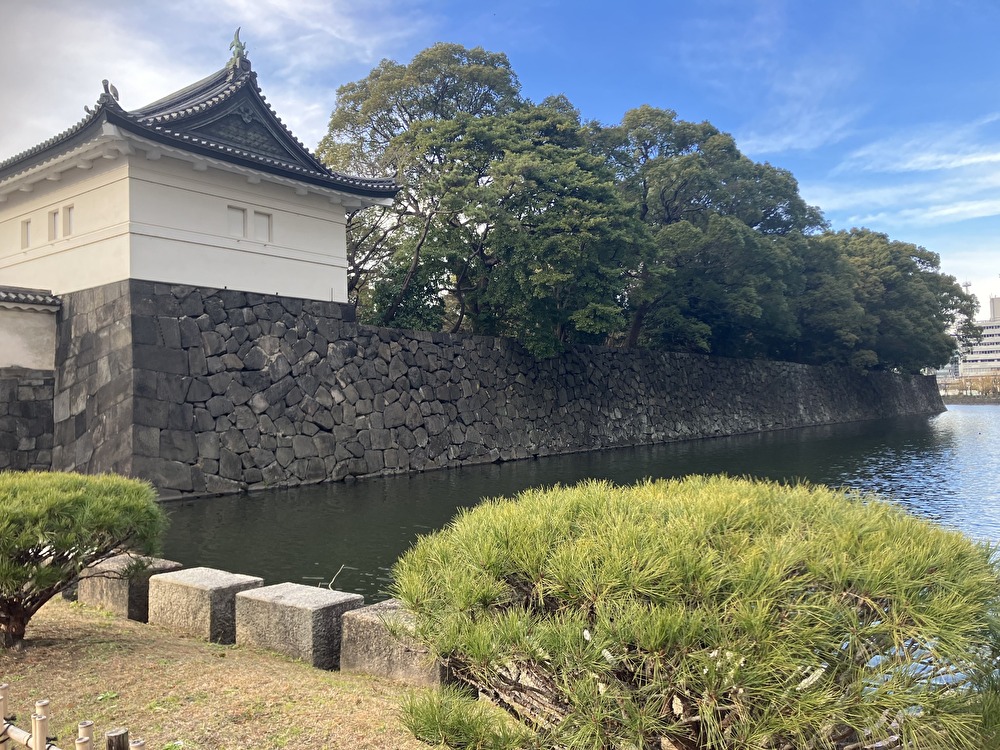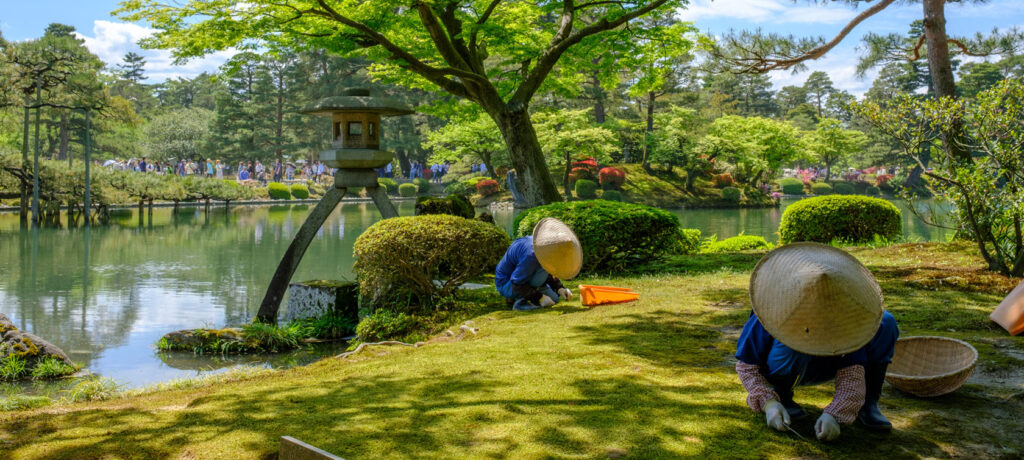Overview
Japan is highly regarded for its wealth of both traditional and modern arts and crafts and on this journey you’ll experience the full spectrum. From the meticulous rituals of the tea ceremony to the mysteries of a geisha performance; the flawless art of origami to refined garden design; dramatic and thought-provoking contemporary sculptures and light installations to a collection of world class galleries and museums. This in-depth cultural appreciation also pays homage to Japan’s ancient samurai, its rich Buddhist and Shinto heritage and its elegant and refined culinary traditions. Stay in supreme comfort at a range of luxury hotels and travel swiftly between destinations by bullet train. You’ll be mesmerised by all you see.
Journey Highlights
- Go behind the scenes to discover the eclectic and unusual that makes Tokyo Asia’s capital of cool.
- Sample a wide range of styles and flavours on an immersive sake appreciation
- Discover why Kanazawa, “Little Kyoto”, is one of Japan’s best kept travel secrets
- Explore the gardens, temples and traditions of old Japan in beautiful Kyoto
- Absorb yourself in modern art, architecture and nature on the art islands of Naoshima and Teshima.
Itinerary
Day 1: Arrive Tokyo

Arrive into the Japanese capital and transfer by private vehicle to your hotel in the Roppongi District for check-in.
Capital of Japan since 1889 and with a population of 38.1 million, Tokyo is the dynamic epicentre of 21st century Japan. A dazzling fusion of ancient and modern, traditional and avant-garde, the city pulsates with promise. Asia’s financial centre and one of the world’s alpha cities, Tokyo offers the traveller a myriad of activities that draw on the city’s imperial history, innovative technology, exciting art and design, and the charm of her people. For food, fun, and fashion there is no city quite like Tokyo.

The Ritz Carlton, Tokyo
Day 2: Tokyo

Your exploration of this dynamic city begins this morning. Meet your guide before heading to the Meiji Shrine. Erected in 1920 amidst a peaceful forest, the shrine is dedicated to the deified spirits of Emperor Meiji, the first emperor of modern Japan, and his consort, Empress Shoken. Consisting of three areas – Naien, the main shrine buildings; Gaien, the outer precinct including the Meiji Memorial Picture Gallery and sports facilities; and the Meiji Memorial Hall – it offers a serene setting for wedding processions as well as Shinto blessing rituals and purification rites.
Next stop, Hamarikyu Japanese Garden situated in central Tokyo on Tokyo Bay where you can marvel at the contrast of the traditionally styled garden and the soaring skyscrapers of the adjacent Shiodome district beyond. Meander past interconnecting seawater ponds which change level with the tides. Step inside the tea house on an island for refreshments, seek out the 300-year-old pine tree, a grove of plums and the wildflower field.
Afterwards visit the Tokyo National Museum, a portal to Japanese creativity since 10,000 B.C. The country’s oldest museum houses buildings that were built in the 17th century, and has hosted exhibitions since 1872. The museum’s permanent collections include works not only from Japan, but also from around Asia, including a substantial amount of art from China, Korea, and India. Additionally, its specific holdings of Buddhist art are among the most important in the world.
This afternoon, venture into the Museum of Modern Art, Tokyo (MOMAT) which houses a huge collection of art by both local and international artists ranging from the Meiji era (1868-1912) to the modern day. With over 13,000 items, the works at MOMAT reflect a turbulent Japan that was rapidly modernising and changing as they were created, giving visitors an extensive visual insight to the period.
Finish the day at a special venue in downtown Tokyo where you explore the neighbourhood and sample some of Japan’s finest sake. Choose from hundreds of brands selected from 41 breweries throughout the country and, under the discerning eye of on-site experts, learn to differentiate between the many styles and regional characteristics. Your tasting includes a couple of cups of sake and some traditional snacks (additional cost). Return to your hotel for the evening.

The Ritz Carlton, Tokyo
Day 3: Tokyo

Be newly inspired today on an art immersion in the galleries of Roppongi. Visit Perrotin, the Japanese outpost of Emmanuel Perrotin’s gallery empire, which offers a vibrant environment to experience the work of some of the world’s most celebrated contemporary artists. Afterwards head to ShugoArts, established by Shugo Satani in 2000, which exhibits an equally eclectic range of contemporary Japanese and international artists.
After lunch, the Mori Museum beckons. Setting the standard for a new kind of public institution, the Mori Museum, located inside the Mori Tower, has an open attitude toward contemporary art and culture. Its aim is to inspire visitors by showing art in new ways through an accessible programme of exhibitions, public events and research projects. At the base of the tower you can’t fail to miss French-American artist and sculptor Louise Bourgeois’s Maman, a giant bronze and marble spider straddling the courtyard. After admiring the art, head up to the observation deck on the 52nd floor of the tower, the city’s highest viewpoint, for jaw-dropping views.
Your gallery experience finishes at Nezu Museum which was founded to conserve and exhibit the collection of pre-modern Japanese and East Asian art that Nezu Kaichiro (1860-1940) had passionately collected during his lifetime. He was unusual among private collectors in amassing works representing a wide range of genres, including painting, calligraphy, sculpture, metalwork, ceramics, lacquerware, wooden and bamboo craft, textiles, armour and archaeological specimens.
Return to your hotel late afternoon and this evening join your guide for an optional night out in Tokyo (additional cost). Visit the throbbing heart of Shinjuku, indisputably Tokyo’s night-time hub. Make a beeline for Kabukicho, a once notorious red-light district that today welcomes all. With an appetite for both food and fun, relish an authentic meal at an izakaya, an eatery-cum-pub popular with the after-work crowd. Move onto the Hanazono Shrine. This unobtrusive shrine surrounded by neon and nightclubs is a favourite place of worship for entrepreneurs seeking success. Follow your guide through dimly lit back alleys to Golden Gai, a cluster of bijou beer joints, whiskey bars, clubs and cafés in what was originally a post-WWII black market. Spend the rest of the evening relaxing in one or more of the 280 establishments here. The first two drinks are on your guide.
Return to your hotel for the night.

The Ritz Carlton, Tokyo
Day 4: Tokyo – Kanazawa

After a leisurely morning, we will transfer to the airport in the early afternoon for a private flight west across Honshu to Kanazawa, said to rival Kyoto as a historical gem on the Japanese mainland.
Set at the southern end of the Noto Peninsula along the coast of the Sea of Japan, Kanazawa is Japan’s hidden secret. Authentically Japanese, the city is home to one of the country’s three most beautiful classical gardens, a historic samurai quarter, a traditional geisha district and a number of elegant handicraft workshops.

Hyatt Centric Kanazawa
Day 5: Kanazawa

Join your guide this morning for a walk through Nagamachi, the former samurai district which flourished during the Edo period (1603-1868) when the powerful Tokugawa shogunate dominated Japan. The Nagamachi area is a mirror to the traditions of samurai life and thanks to meticulous restoration, visitors can better appreciate this rich chapter of Japanese history. During the walk you will stop to visit the Nomura-ke, an exquisitely restored samurai residence which features an elegant garden and an outstanding collection of art and artifacts from the Edo period. Also visit one of the city’s silk dyeing studios to see beautiful hand-made silks dyed in the centuries-old traditional methods still used by artists today.
Later this morning marvel at the architectural design of the 21st Century Museum of Contemporary Art which closely resembles a UFO. The circular structure, designed by Sejima Kazuyo and Nishizawa Ryue of world-renowned SANAA, is void of designated entry points, allowing visitors to literally approach the museum, and its artworks, any way they choose. Installations by Leandro Erlich and James Turrell are interspersed throughout the museum’s public spaces, seamlessly integrating art into everyday life.
After lunch, a botanical treat is in store when you explore the Kenrokuen Garden considered one of the three finest “classical” gardens in all of Japan. The garden, which is located to the southwest of Kanazawa Castle, was begun in 1676 and restored again in 1759. It covers an area of 25 acres and includes over 8,000 trees and plants representing 183 different species. The highlight of this visit is Seisonkaku Villa, a beautiful samurai home located in the southwest corner of the garden.
Your last stop today is the Kutani pottery kiln, which offers an exclusive look into the making of these delicate ceramic wares, from their formation on the potter’s wheel to final hand-painted flourishes. Try your skills with a hands-on pottery and painting experience, marking your day in Kanazawa with a personalised memento.
Hyatt Centric Kanazawa | Meals: B
Day 6: Kanazawa

This morning, captivating photographic opportunities await at Omicho Ichiba, the largest covered market in the city. In business since 1721 this lively market comprises 186 shops and stalls selling fresh seafood and locally grown fruits and vegetables. Make time to sample local delicacies cooked fresh before your eyes.
Continue to Higashi Chaya-gai, a geisha district. Chaya is a traditional place of feasts and entertainment, where geisha have been entertaining guests by performing dances and playing Japanese traditional musical instruments since the Edo period. Venture inside a 180-year-old chaya house for a glimpse into the unique lifestyle of the geisha. Pause for refreshments at an authentic tea house and look out for shops selling gold leaf products, a specialty of Kanazawa.
Return to the hotel with the afternoon at leisure.

Hyatt Centric Kanazawa | Meals: B
Day 7: Kanazawa – Kyoto

This morning you are accompanied on foot the short distance to Kanazawa train station for the bullet train south to Kyoto, Japan’s cultural capital. On arrival you are met by your guide for your first glimpse of this fascinating city.
If Tokyo suggests the future then Kyoto is the heart of historic Japan, a city steeped in imperial heritage and deeply rooted in classical Japanese tradition. Serving as the capital of imperial Japan from 794 to 1868 it is famous for its cultural treasures: temples, gardens, shrines, and the intangible philosophy of an ancient way of life. For visitors, the city features the country’s greatest concentration of Japanese history and culture; a repository of the cultural treasures for which Japan is celebrated.
Start off at the National Museum of Modern Art, Kyoto (MoMAK), a national institution devoted to the collection and preservation of artworks and related reference materials of the 20th century in Japan and other parts of the world. Particular emphasis is placed on artists or artistic movements in Kyoto and the Kansai area (the western region of Japan), such as paintings from the Kyoto School, while still focusing on mainstream Japanese modern art and craft movements as well as works from all over the world.
After lunch, visit galerie 16, one of the city’s best contemporary art spaces. The gallery has been running since 1962 and is an important player in the local art scene.
Arrive at your hotel on the banks of the Kamogawa river late this afternoon and admire the splendid mountain views.

The Ritz Carlton, Kyoto | Meals: B
Day 8: Kyoto

This morning explore one of Kyoto’s major landmarks, Nijo Castle. Built in 1603 by the first shogun of the Edo Period, Tokugawa Ieyasu, as his Kyoto residence, the castle is one of the finest examples of feudal era Momoyama architecture. Beyond its massive stone walls and sprawling palace grounds bursting with cherry trees stands the castle’s centrepiece: the ornately embellished Ninomaru Palace.
Move on to another cultural landmark – Kinkakuji, a magnificent Zen temple which overlooks Kyokochi Pond. Originally conceived as a warlord’s retirement villa, Kinkakuji is also known as the Golden Pavilion, thanks to the layers of gold leaf which adorn the top two floors.
Later you drive to Arashiyama, filled with more temples and shrines as well as the iconic 155-metre-long Togetsu Bridge. Stroll across the bridge and admire the ever-changing mountain scenery. In springtime, the cherry trees that line the Oi River are a riot of pink blossom. Continue to nearby Tenryuji, ranked among Kyoto’s five great Zen temples. Erected in 1339 and today a UNESCO World Heritage Site, the shrine is best appreciated from its charming gardens.
Take time, also, for a rickshaw ride through the famous bamboo groves (additional cost). The groves are particularly attractive when there is a light wind and the towering bamboo stalks sway gently back and forth. The bamboo has been used to manufacture various products, such as baskets, cups, boxes and mats at local workshops for centuries.

The Ritz Carlton, Kyoto | Meals: B
Day 9: Kyoto

This morning, you will have an opportunity to experience traditional Kyoto culture with the wearing of a kimono. Be guided on the intricacies of this time-honoured form of dress in a traditional machiya town house.
Afterwards, on origami immersion takes place. Learn how to transform a square sheet of paper into a finished sculpture through intricate folding and sculpting techniques. Origami has been practiced in Japan since the Edo period (1603-1867).
After lunch today, head to the Philosopher’s Path, a cherry-tree lined two-kilometre-long trail named for the Japanese philosopher Kitaro Nishida who used to walk the path daily to meditate. As you wander along, admire the changing floral blooms and foliage, pause for refreshment in one of the cafés which line the way and look out for shrines and temples, especially the Silver Pavilion with its magical garden setting.
No visit to Kyoto is complete without experiencing the geisha culture. Later this afternoon there is time to amble through the alleyways of Gion, Kyoto’s famed geisha district. Wander the back streets – lined with bars, restaurants and teahouses clad in old-style wooden facades – and catch a glimpse of elusive geishas and maikos as they flit between lessons and appointments.
The Gion District is synonymous with the traditional world of the geisha and even today the narrow lanes are coloured by the elegant kimono of the resident geisha who carry on this ancient and somewhat mysterious tradition. Enjoy an afternoon private visit with a maiko, apprentice geisha, who will serve you tea as part of a traditional ceremony and treat you to a skilful dance performance. A private dinner with a geisha is an option this evening (additional cost).

The Ritz Carlton, Kyoto | Meals: B
Day 10: Kyoto – Okayama – Naoshima

This morning you are transferred to the station for the bullet train to Okayama where you continue to Naoshima Island by private vehicle and local ferry. Washed by the jade waters of the Inland Sea, Naoshima and its sister island, Teshima, have become an international art sensation – these are the art islands of Asia. Attracting the world’s most celebrated contemporary artists and designers, the islands are shrines to the diversity of international contemporary art. No visit is complete, however, without an overnight stay at the island’s eccentrically charming Benesse House Museum and Hotel.
Begin your visit at the Chichu Art Museum, yet another exemplar of the seamless dialogue between art, architecture and nature that pervades Naoshima Island. Artworks by James Turrell, Claude Monet and Walter De Maria have been thoughtfully integrated into Ando’s intimate spaces, which despite being largely subterranean, utilise only natural lighting, making for magically illuminated surrounds that change hourly with the light of the day as well as the seasons.
After lunch, make your way to the nearby Lee Ufan Museum, where the organic stone and steel sculptures and two-dimensional paintings of Korean contemporary artist Lee Ufan resonate harmoniously with Ando’s gentle, minimalist architecture.
Arrive at your art hotel, Benesse House, late this afternoon and settle in for a unique experience of art, nature and architecture. At your own pace, admire the many works of art and sculpture displayed right around the complex which was skilfully designed by Tadao Ando.

Benesse House
Day 11: Naoshima – Teshima – Naoshima

Today is a further opportunity to delve into Japan’s unique art scene on a day trip to Teshima Island. Start off at Teshima Yokoo House, a collaboration between artist Tadanori Yokoo and architect Yuko Nagayama, which was created by renovating an old private house located in a hamlet in the Ieura District, facing the harbour that forms the entrance to Teshima Island. Making full use of the building’s existing layout, the exhibition areas are divided into a “Main House,” a “Warehouse,” and an “Outhouse,” displaying 11 two-dimensional works.
Continue to the Teshima Art Museum which stands on a hill on the island of Teshima overlooking the Seto Inland Sea. Uniting the creative visions of artist Rei Naito and architect Ryue Nishizawa, the museum is located in the corner of a rice terrace that was restored in collaboration with local residents and resembles a water droplet at the moment of landing.
Your last stop is “Les Archives du Cœur”, by Christian Boltanski, whose recordings of the heartbeats of people throughout the world are permanently housed here. Christian Boltanski has been recording these heartbeats since 2008. You may also like to record your own heartbeat during the visit.
At the end of the day return to Naoshima.

Benesse House
Day 12: Naoshima – Depart Osaka

This morning is a final chance to peruse the art installations at Naoshima before transferring to Osaka Kansai International Airport for your departure flight.
Contact us:info@celebrityworld.jp
